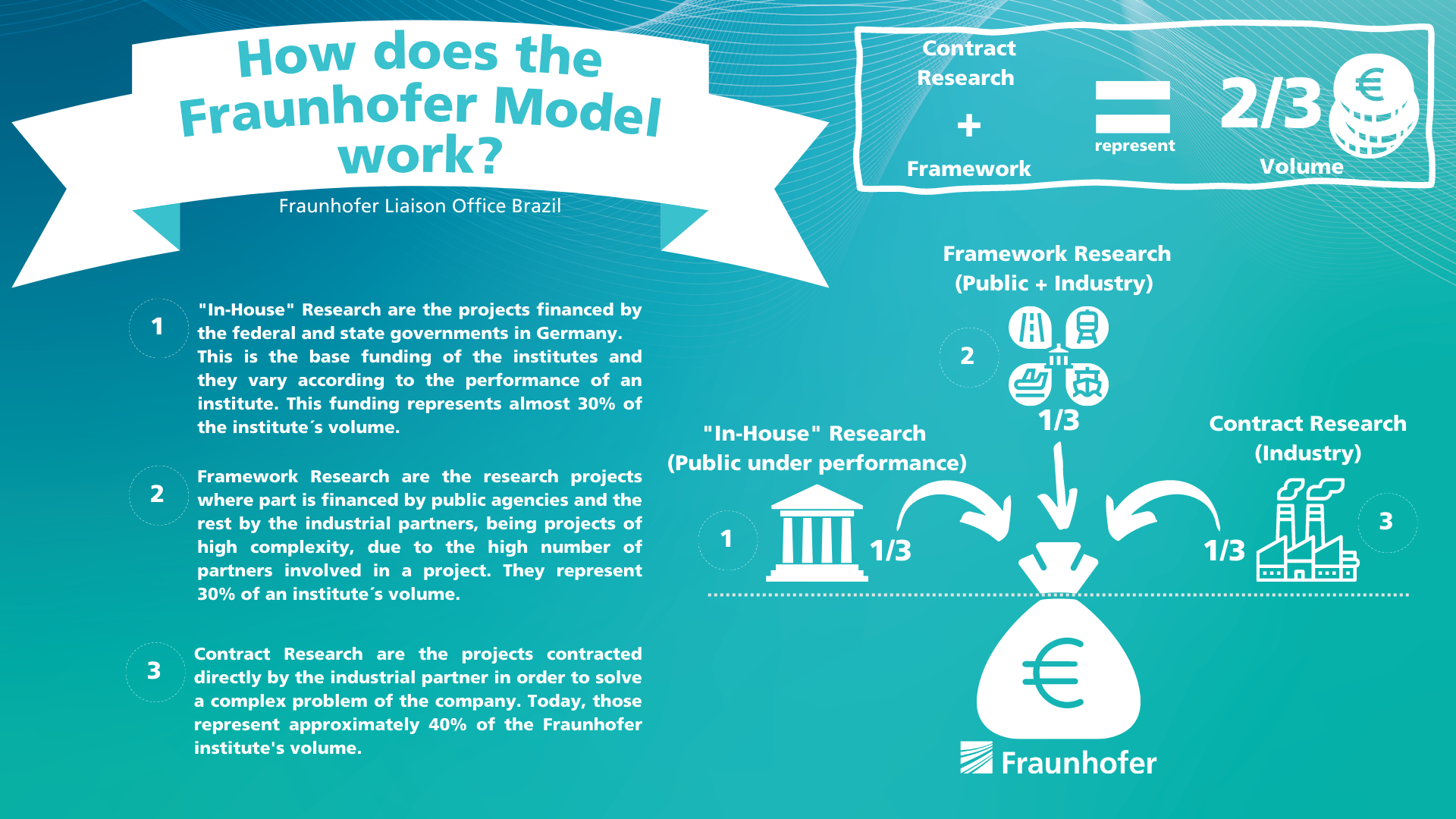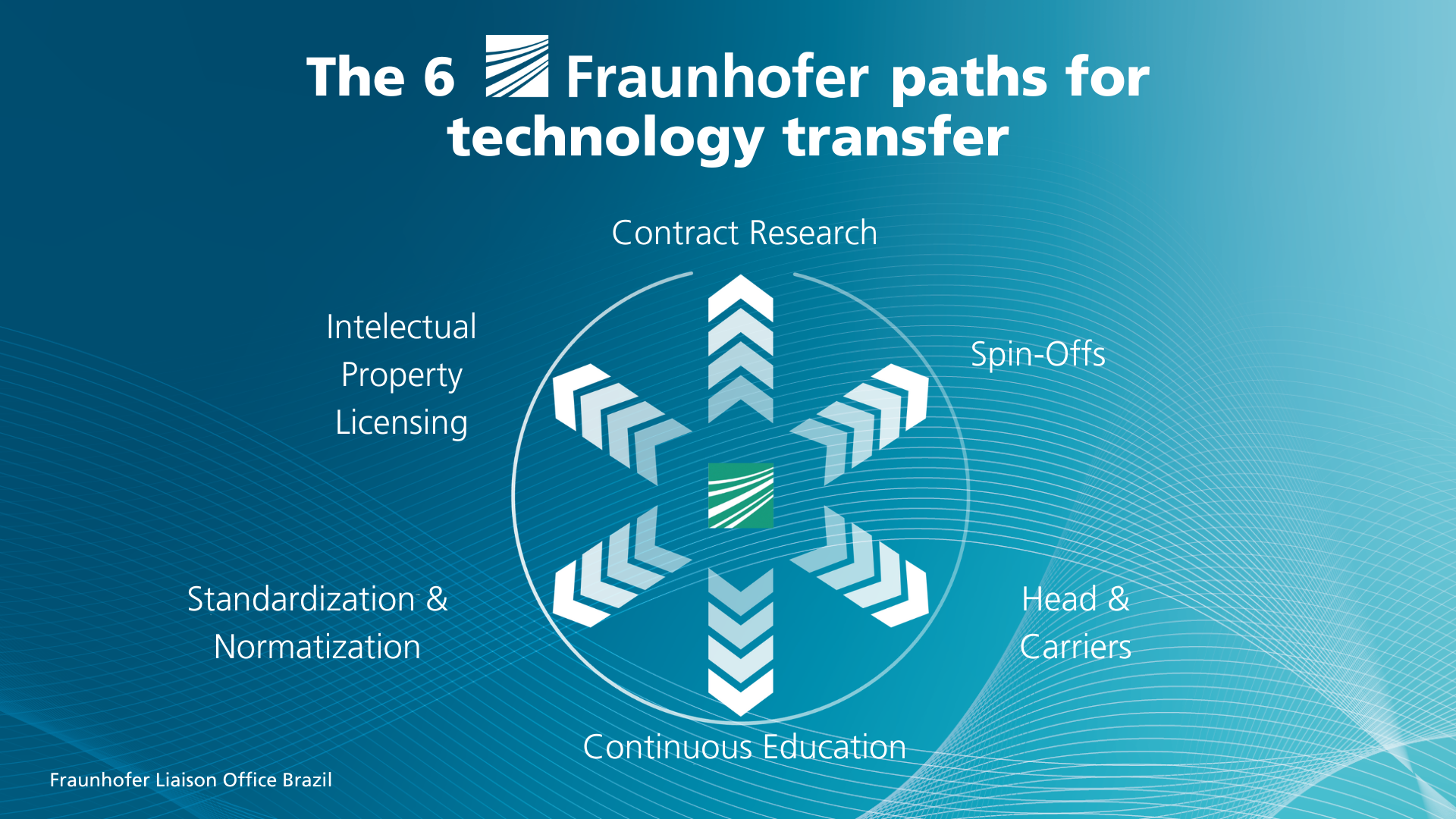Connecting Research and Business
The Fraunhofer model arose to develop science and industry together, with a focus on bringing cutting-edge innovation and technology to the whole of society.
A little bit of the Fraunhofer´s history...
The Fraunhofer-Gesellschaft zur Förderung der angewandten Forschung e.V. (Fraunhofer Society for the Promotion of Applied Research) was founded on Saturday, March 26, 1949, in front of an audience of 210 scientists, business people, and politicians in the conference hall of the Bavarian Ministry of Economic Affairs at the invitation of State Secretary Hugo Geiger. This was an urgent issue for Geiger, who felt that "there was a lack of support for applied research through a direct and permanent link between business and science.
Although founded in 1949, it was not until 1972 that a more or less draft was produced by Max Syrbe, which served as a basis for further consultation. Helmar Krupp joined Syrbe. The team presented its preliminary plan for research, organization, expansion and finance. At almost 100 pages, its concept departed substantially from the central idea of the expansion committee, which advocated a guaranteed budget as a way to strengthen applied research.
The repercussions were immense. After all, the new concept represented a total break with standard thinking in the management of an institute. It proposed the division of an institute's research activities into In-House research, Framework research, and Contract research, with Framework and Contract research accounting for two-thirds of an institute's total activities. In other words, an institute would be forced to obtain two-thirds of its own budget.
Equally revolutionary was the proposal regarding the allocation of funding, since it departed completely from the usual procedure: the idea was that core funding should increase in direct proportion to the growth of income from Framework and Contract research. Indeed, the very idea that institutes should concentrate on contractual and market-oriented research provoked protest from many institute directors, especially those working in areas hitherto distant from any commercial interest.
Many discussions took place, since the institute directors wanted the basic funding to be fixed. This would make life easier for the institutes. But now they would be forced to agree to a variable subsidy system. This would cause enormous pressure to secure new research contracts, and few felt that they would be up to it. There was even greater opposition from the Ministry of Finance. The authorities there were shocked by what the Ministry of Science had worked out, since the new model diverged radically from the cast-iron principles of state finance. For the Ministry of Finance, basic performance-related funding meant committing to future expenses without knowing how much that would entail.
It was only after months of wrangling that an agreement was reached. On this basis, after years of discussion and conflict, the cabinet committee for education, research and technology finally managed to pass a resolution on the future of the Fraunhofer Society on October 3, 1973. There was now a firm political will to transform the Fraunhofer Society into a powerful and effective organization for applied research and, at the same time, to explore new forms of research funding with the aim of strengthening the role of contract research. From that point on, the Fraunhofer Society would assume a dual role - as a partner serving industry and the state in equal measure.

Implementation consequences
The introduction of this basic performance-related funding model has had enormous consequences. It has released enormous energy within the Fraunhofer Society and unleashed a level of growth that was previously unimaginable. The new model also broke the vicious circle whereby any money earned by Fraunhofer automatically resulted in a reduction in state funding. Performance was now rewarded by an increase in direct subsidies. Instead of each institute having a fixed budget and staff, the successful ones grew, while the less successful ones had to tighten their belts. To this day, the model remains an extremely effective planning instrument that imposes continuous adjustment to emerging markets, thereby encouraging institutes to remain efficient.
Ultimately, it was a blessing that the relationship between core funding and contract research was never fixed in detail. As things stand, it can be adjusted to accommodate changed circumstances in science, industry, or government. The original proposal was to test the model over a five-year period and then examine it again every five years. The ability to adjust both the structure and purpose of each institute has become a key part of Fraunhofer's new identity.
Remember that the Fraunhofer Society is made up of institutes. In 2021, there were 76 research institutes in all areas of human knowledge, about 2.9 Billion Euros in budget, where 2.5 Billion was in Public and Private Research and, around 1.75 Billion Euros in Framework and Contract Research.
The Fraunhofer model
The 3 types of research that make up the Fraunhofer Society are as follows:
1 - "In-House" research: these are funded by German federal and/or state governments. This funding is the "base funding" of the institutes and varies according to the performance of a Fraunhofer institute. It represents about 30% of the institute's budget.
2 - Framework Research: research where part is financed by public entities and part by industries, being highly complex projects due to the high number of partners involved in a project. These are the public research edicts. They represent about 30% of the budget of a Fraunhofer institute.
3 - Contract Research: these are projects paid for directly and purely by the industrial partner, for the resolution of a complex problem of the company itself. Today, this research accounts for about 40% of a Fraunhofer institute's budget.
Other forms of the Technology Transfer made by Fraunhofer Society
Basically, the Fraunhofer Society transfer technology to the society through 6 paths:

1 – Contract Research
2 – Spin-Offs Creation
3 – Head and Carrierss
4 – Continuous Education (Fraunhofer Academy)
5 – Standardization and Normatization
6 – Intelectual Property Licensing
But, this is a conversation for other blog article.
Do you want to know more details of the Fraunhofer´s history?
Access the Fraunhofer Magazine 2 from 2019 through the link (source of the most part of the text):
https://www.archiv.fraunhofer.de/Fraunhofer_magazine_2_2019/#0
Written by:
Dr.-Ing. Rodrigo Pastl
 Fraunhofer Liaison Office Brazil
Fraunhofer Liaison Office Brazil